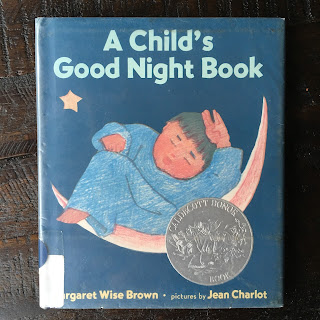This should be the final April installement of my Caldecott Calendar project. All of my posts for this project (including updates) can be found here or by clicking on 'Caldecott Calendar' in the header up top. My personal favorites will be marked with an asterisk (*). This post may be updated to correct errors, omissions, etc. as we go. Let me know in the comments if you notice anything that should be fixed or added!
National Poetry Month
To celebrate National Poetry Month, I've rounded up the books clearly marked as including poems or nursery rhymes, as well as any other titles that are particularly poetic/lyrical. I've tried no
2000 Caldecott Honor
Trina Schart Hyman is a favorite illustrator of mine!

Red Sings from Treetops: A Year in Colors, written by Joyce Sidman & illustrated by Pamela Zagarenski
2010 Caldecott Honor

Red Sings from Treetops: A Year in Colors, written by Joyce Sidman & illustrated by Pamela Zagarenski
2010 Caldecott Honor
A Visit to William Blake's Inn: Poems for Innocent and Experienced Travelers written by Nancy Willard & illustrated by Alice & Martin Provensen
1982 Caldecott Honor
*Song of the Water Boatman and Other Pond Poems, written by Joyce Sidman & illustrated by Beckie Prange
2006 Caldecott Honor
I featured this title once already on the list for Earth Day and it works for spring as well -- it's doing triple duty as an April book!
1978 Caldecott Medal
This nearly wordless picture book includes the text of a translated poem 'The Flood' by Jacobus Revius on a single page near the beginning.
*All the World, written by Liz Garton Scanlon & illustratee by Marla Frazee
2010 Caldecott Honor
The brevity and careful word choice of picture books means many could be considered to have poetic text, but I'm going to be selective in making that determination -- and this one certainly qualifies!
The Rooster Crows: A Book of American Rhymes and Jingles, written & illustrated by Maud & Miska Petersham
The Rooster Crows: A Book of American Rhymes and Jingles, written & illustrated by Maud & Miska Petersham
1946 Caldecott Medal
1956 Caldecott Medal
An old Scottish ballad written in rhyming couplets.
2017 Caldecott Honor
This is a rhyming picture book, but really, all of Carole Boston Weatherford's books are poetry!
*Voice of Freedom: Fannie Lou Hamer: The Spirit of the Civil Rights Movement, written by Carole Boston Weatherford & illustrated by Ekua Holmes
2016 Caldecott Honor
A biography-in-poems of an incredible woman -- don't miss this one!
Dave the Potter: Artist, Poet, Slave, written by Laban Carrick Hill & illustrated by Bryan Collier
2011 Caldecott Honor
A River of Words: The Story of William Carlos Williams, by Jen Bryant, Melissa Sweet
2009 Caldecott Honor
This biographical picture book introduces doctor and poet William Carlos Williams.
The Spider and the Fly, written by Mary Howitt & illustrated by Tony DiTerlizzi
2003 Caldecott Honor
This classic cautionary poem is illustrated by the same man who illustrated The Spiderwick Chronicles! This one would be good to read for Halloween as well.
Harlem: A Poem, written by Walter Dean Myers & illustrated by Christopher Myers
1998 Caldecott Honor
*Voice of Freedom: Fannie Lou Hamer: The Spirit of the Civil Rights Movement, written by Carole Boston Weatherford & illustrated by Ekua Holmes
2016 Caldecott Honor
A biography-in-poems of an incredible woman -- don't miss this one!
Dave the Potter: Artist, Poet, Slave, written by Laban Carrick Hill & illustrated by Bryan Collier
2011 Caldecott Honor
A River of Words: The Story of William Carlos Williams, by Jen Bryant, Melissa Sweet
2009 Caldecott Honor
This biographical picture book introduces doctor and poet William Carlos Williams.
The Spider and the Fly, written by Mary Howitt & illustrated by Tony DiTerlizzi
2003 Caldecott Honor
This classic cautionary poem is illustrated by the same man who illustrated The Spiderwick Chronicles! This one would be good to read for Halloween as well.
Harlem: A Poem, written by Walter Dean Myers & illustrated by Christopher Myers
1998 Caldecott Honor
Mother Goose: Seventy-seven Verses, illustrated by Tasha Tudor
1945 Caldecott Honor
Mother Goose books are a dime a dozen, but I do have a soft spot for Tasha Tudor's illustrations!
Mother Goose books are a dime a dozen, but I do have a soft spot for Tasha Tudor's illustrations!
Book of Nursery and Mother Goose Rhymes, illustrated by Marguerite de Angeli
1955 Caldecott Honor
FYI: The cover at really doesn't do the interior artwork justice.
FYI: The cover at really doesn't do the interior artwork justice.
Four and Twenty Blackbirds: Nursery Rhymes of Yesterday Recalled for Children of Today, collected by Helen Dean Fish & illustrated by Robert Lawson
1938 Caldecott Honor
Song of Robin Hood, selected by Anne Malcolmson, music by Grace Castagnetta, designed & illustrated by Virginia Lee Burton
1948 Caldecott Honor
1972 Caldecott Honor
Picture book of an old nursery rhyme.
The House That Jack Built/La Maison Que Jack A Batie, written & illustrated by Antonio Frasconi
The House That Jack Built/La Maison Que Jack A Batie, written & illustrated by Antonio Frasconi
1959 Caldecott Honor
A bi-lingual nursery rhyme picture book
Mother Goose and Nursery Rhymes, illustrated by Philip Reed
1964 Caldecott Honor
Sing Mother Goose, music by Opal Wheeler & illustrated by Marjorie Torrey
1946 Caldecott Honor
Duke Ellington: The Piano Prince and His Orchestra, written by Andrea Davis Pinkney & illustrated by Brian Pinkney
1999 Caldecott Honor
Trombone Shorty, written by Troy Andrews; illustrated by Bryan Collier
2016 Caldecott Honor
1980 Caldecott Honor















































